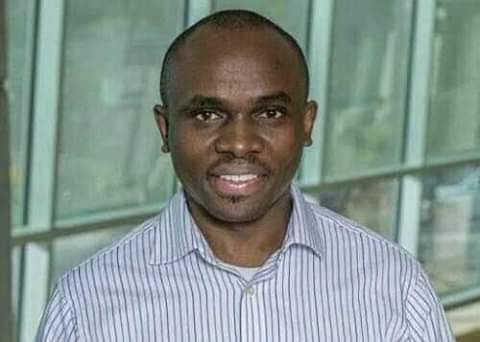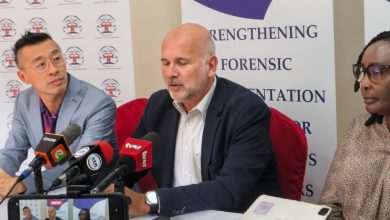Meet Dr Benson Edagwa a Kenyan Scientist behind HIV cure

One evening in 1997, after trekking for 10km from school, Benson Edagwa was called aside by his late father, a chief and maize farmer in Isitsi village, Sabatia constituency, Vihiga county.
Andrew Edagwa looked at his 15-year-old son, then in form two, he didn’t see an A-material, but neither did he see a failure.
“If you work hard and get a C+, then I may find you something to do,” he said quietly
“BUT AFTER MY FATHER’S WORDS, I BEGAN GETTING SERIOUS WITH MY STUDIES. MY MOTHER ALSO SAID I SHOULD JUST GET SOME GOOD GRADES. IN FORM ONE AND FORM TWO I WASN’T SERIOUS, BUT IN FORM THREE, I STARTED TO STUDY HARD,” BENSON SAYS.
Benson was a day-scholar at Mbale Boys High School, about 10km away. Getting to university was out of question because the school, at that time, often took few students to the campus every year
“I work on HIV with a passion because I’ve seen many Kenyans, including some close relatives, lose lives,” the scientist said.
HOW HE DID IT
The feat was enabled by Edagwa’s own invention, called the Long-Acting Slow Effective Release Antiretroviral Therapy (Laser Art).
Dr Edagwa holds 13 drug discovery patents in the US.
“My patents broadly cover HIV and Hepatitis B. Some cover conditions such as Ebola and Zika,” Dr Edagwa says.
He remains extremely hopeful of a drug he is working on to treat Hepatitis B, an infection of the liver.
At the University of Nebraska, Proff Edagwa mostly supervises PhD students, usually medical doctors and pharmacologists.
He completed his PhD at the Louisiana State University in 2012 and accepted a position at the University of Nebraska Medical Centre the same year
Medicinal chemistry entails the creation of new compounds. “It’s a drugs discovery area. You try to make new molecules and test them against certain diseases and see if they work,” he says.
Edagwa is also the lead medicinal and formulation chemist on efforts to make better treatments against HIV and other chronic infections at the University of Nebraska Medical Centre.
AIDS Cure
The research team led by Benson Edagwa, Ph.D., assistant professor, UNMC Department of Pharmacology and Experimental Neuroscience, and Howard Gendelman, M.D., chairman and professor of the department, developed the world’s first potential yearlong antiretroviral (ARV) for prevention of HIV infection by converting a month-long ARV drug into a once-per-year therapeutic.

“This pharmaceutical development has the potential to not only treat but also prevent viral transmission,” said Dr. Gendelman, who designed the pharmacological testing. “This may certainly be a therapeutic milestone.”
The study describes what could function as a vaccine mimetic to protect the body against HIV infection for an extended time period.
“While viral vaccines and long-acting modified ARVs have very different modes of action, they can both function to protect against infection,” Dr. Gendelman said.
Currently, individuals with HIV must take their medicine daily to control the disease. If proven safe and effective in clinical studies, the UNMC treatment would allow people with HIV to receive an injectable medicine once yearly.
The innovations now in development could prevent HIV transmission in individuals vulnerable to infection. Although existing ARV regimens allow individuals with HIV to live with minimal health complications and prevent HIV transmission to sexual partners, the risk of missing daily treatment is a major health care concern. Missing daily doses of ART can cause the virus to rebound and cause associated comorbidities.
Dr Edagwa and Gendelman credited a large team of scientists within the department fo.r work on the project, including instructor Aditya Bade, Ph.D., and graduate student Tanmay Kulkarni.
The scientists created a year-long-acting medicine from the parent drug cabotegravir (CAB). CAB is a potent HIV-1 drug that blocks the virus from inserting its genetic material into human cells. By chemically converting CAB into a nanocrystal and allowing the body’s own enzymes to slowly convert the modified drug into an active form, the drug can be slowly released from tissue stores.
“This occurs for extended time periods, and in laboratory and animal testing, up to a year,” said Dr. Edagwa, who designed and produced the required modifications of the new prodrug. A prodrug is a classification of pharmaceutical products where an inert compound is converted into an active form by the body.
Proff Edagwa is married to , Dr Teresa Mutahi, who lectures at the University of Florida, and the couple has two boys aged seven and four years.






